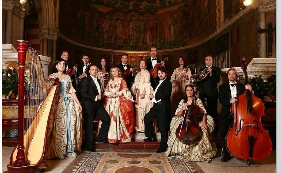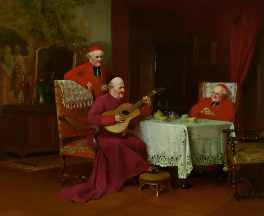An in depth analysis of the development and influence of classical music in Europe in the 18th century
3 min read
The European classical music of the 18th century is regarded as an important period in the development of Western classical music. The music works of this period are famous for their simplicity, elegance and elegant style, their delicate treatment of harmony, rhythm and melody, and their pioneering role in expressionist and romantic music.During this period, a number of outstanding composers such as Haydn, Mozart and Beethoven contributed to the creation of the Golden Age of European classical music. This article explores the history, influence and value of the journey of European classical music in the 18th century.
First, historical background.
The background of the 18th century classical music tour in Europe is the Renaissance of European culture and art. Musicians of this period, Bach, Handel, Haydn, Mozart, Beethoven and others, began to draw inspiration from the music of the Baroque period, and they toured Europe in the 18th century. Making classical music a popular cultural phenomenon.
The characteristics of European classical music in the 18th century are mainly reflected in the musical form, technique, structure and style.
In 18th century European classical music, common forms of music include sonatas, symphonies, concertos, operas, and religious music. The sonata is a very important form. It usually consists of three or four movements, including a fast first movement, a slow second movement, a dance-like third movement, and a fast fourth movement.
This form is widely used in instrumental music, such as Beethoven’s piano sonata and violin sonata, etc. In the 18th century European classical music, the skills of various instruments have been greatly improved, especially the piano, because of its development and become one of the main instruments in classical music.
Piano techniques include jumping, vibrato, glissando, triplet, etc. These techniques are widely used in sonatas and concertos.
In 18th century European classical music, the structure became more complex, mainly in sonatas and symphonies, which included themes, variations, complex counterpoints, choruses and symphonic variations, etc.
The style of European classical music in the 18th century is very rigorous, emphasizing symmetry and balance. This style is called classicism style, which emphasizes reason, order and symmetry. Classical music has clear,
It is characterized by brightness and elegance, and it usually does not use excessive decoration and ornate riffs.
Schools of classical music in Europe in the 18th Century.
There are many schools of classical music in Europe in the 18th century. Some of the most important schools include Baroque music, classical music, romantic music and so on.
Baroque music refers to the musical style from the second half of the 17th century to the middle of the 18th century. Baroque music is characterized by complex structure, a large number of decorations and ornate passages. Representative works include Bach’s Tea Tasting Suite and Matthew Passion.
Classical music was a style of music from the late 18th century to the early 19th century. Classical music advocated simplicity, elegance and control. Examples of classical music include Haydn’s Symphony and Beethoven’s Piano Concerto.
Romantic music is a musical style from the mid-19th century to the early 20th century. It emphasizes individuality and sensibility, showing strong emotions and subjective consciousness. Representative works include Chopin’s Nocturnica and Schubert’s Winter Journey.






